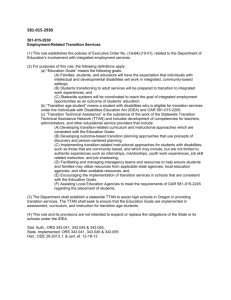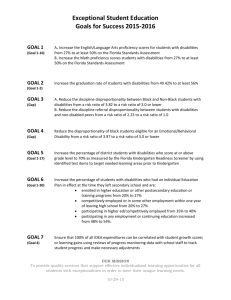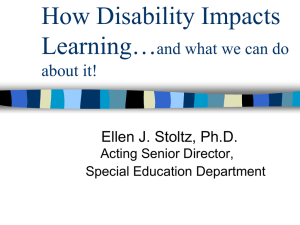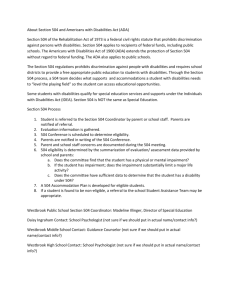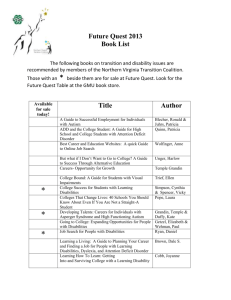Time Management for Students with Learning Disabilities and ADD
advertisement
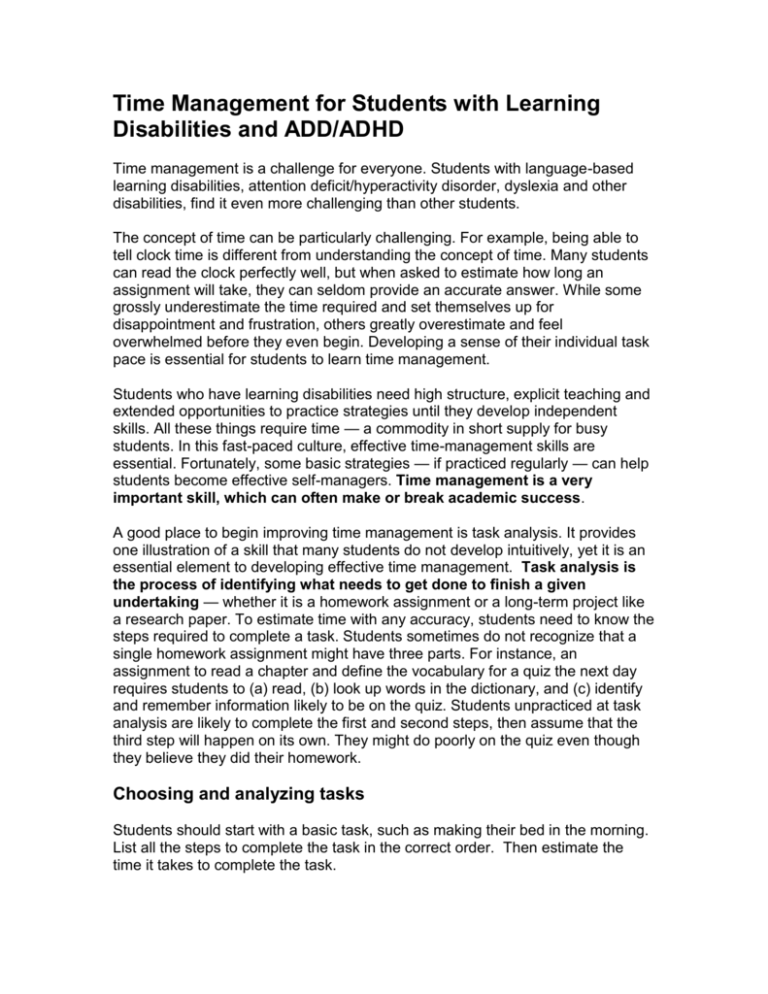
Time Management for Students with Learning Disabilities and ADD/ADHD Time management is a challenge for everyone. Students with language-based learning disabilities, attention deficit/hyperactivity disorder, dyslexia and other disabilities, find it even more challenging than other students. The concept of time can be particularly challenging. For example, being able to tell clock time is different from understanding the concept of time. Many students can read the clock perfectly well, but when asked to estimate how long an assignment will take, they can seldom provide an accurate answer. While some grossly underestimate the time required and set themselves up for disappointment and frustration, others greatly overestimate and feel overwhelmed before they even begin. Developing a sense of their individual task pace is essential for students to learn time management. Students who have learning disabilities need high structure, explicit teaching and extended opportunities to practice strategies until they develop independent skills. All these things require time — a commodity in short supply for busy students. In this fast-paced culture, effective time-management skills are essential. Fortunately, some basic strategies — if practiced regularly — can help students become effective self-managers. Time management is a very important skill, which can often make or break academic success. A good place to begin improving time management is task analysis. It provides one illustration of a skill that many students do not develop intuitively, yet it is an essential element to developing effective time management. Task analysis is the process of identifying what needs to get done to finish a given undertaking — whether it is a homework assignment or a long-term project like a research paper. To estimate time with any accuracy, students need to know the steps required to complete a task. Students sometimes do not recognize that a single homework assignment might have three parts. For instance, an assignment to read a chapter and define the vocabulary for a quiz the next day requires students to (a) read, (b) look up words in the dictionary, and (c) identify and remember information likely to be on the quiz. Students unpracticed at task analysis are likely to complete the first and second steps, then assume that the third step will happen on its own. They might do poorly on the quiz even though they believe they did their homework. Choosing and analyzing tasks Students should start with a basic task, such as making their bed in the morning. List all the steps to complete the task in the correct order. Then estimate the time it takes to complete the task. Students next progress to a discrete academic task, such as a homework assignment or chapter reading. They generally need guidance at this point to avoid oversimplifying. For example, for an assignment to read the first section of chapter 6 in their social studies textbook, students might simply write one step — read — on their worksheets unless explicitly directed to break the task into smaller steps. As students begin to grasp the complexity of simple/discrete tasks, task analysis can extend to far more complex tasks, like writing a research paper and preparing for a final examination. Testing students' time estimates Once a task is analyzed and its time estimated, students prepare to complete the task and start a timer. When the task is complete, they stop the timer and record the actual time on the worksheet. (Students should stop the timer if they are interrupted or have to stop for more than a minute so their actual times will be accurate.) Last, students calculate how much they under- or overestimated their task time. Mastering the Routine Accurately estimating how much time it takes to complete tasks is essential for long-term planning. Students learn that their actual times vary according to the length and complexity of the assignment, their level of concentration, and other factors like fatigue, motivation, and interest. They also learn which tasks are quick and easy and which require more time and effort. Students get quite good at this when they practice enough. Taking the time to analyze tasks and estimate time helps students develop valuable study skills that will help manage classwork and homework more confidently and effectively. Time-management is also a skill that enhances students' lives outside the classroom; they may find they have less anxiety about their work, more free time, and growing pride in a skill that will serve them well throughout their lives.





